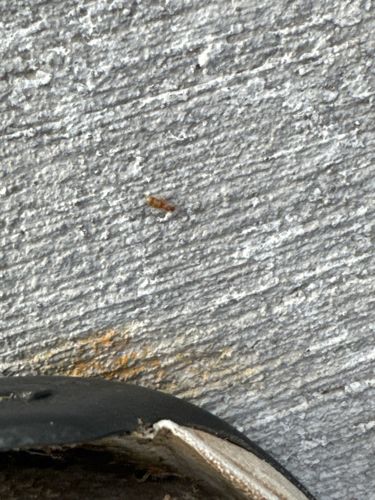Flour Beetle (likely Confused Flour Beetle or Red Flour Beetle)
Scientific Name: Tribolium confusum (Confused Flour Beetle) or Tribolium castaneum (Red Flour Beetle). It's difficult to distinguish between the two without a clearer view of the antennae.
Order & Family: Order: Coleoptera, Family: Tenebrionidae
Size: Typically 3-4 mm (0.12-0.16 inches) in length.

Natural Habitat
These beetles are common pests of stored products and are typically found in pantries, kitchens, food processing plants, warehouses, and grocery stores. They prefer warm, dark, and humid environments, often hiding in cracks and crevices or within food containers.
Diet & Feeding
Flour beetles are scavengers and primarily feed on milled grain products such as flour, cereal, cornmeal, pasta, and pet food. They can also infest nuts, dried fruit, spices, chocolate, and drugs. They cannot feed on whole grains unless the kernels are damaged.
Behavior Patterns
Flour beetles are highly mobile and will quickly infest suitable food sources. They are known to be resilient and can survive in harsh conditions. They undergo complete metamorphosis with egg, larval, pupal, and adult stages. Females lay eggs directly into food sources. Larvae are active and feed on the same material as adults. Adult beetles are long-lived, sometimes for more than a year.
Risks & Benefits
Risks: Flour beetles are significant pantry pests. While they are not known to transmit diseases to humans, their presence can contaminate food products with their bodies, feces, and secretions, leading to an unpleasant odor and taste, and making the food unfit for human consumption. Heavy infestations can cause economic losses for food producers and consumers. Benefits: No direct benefits for humans.
Identified on: 8/26/2025